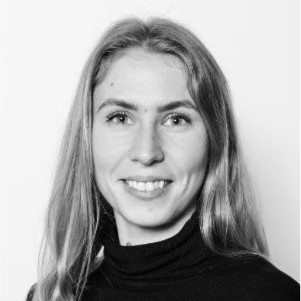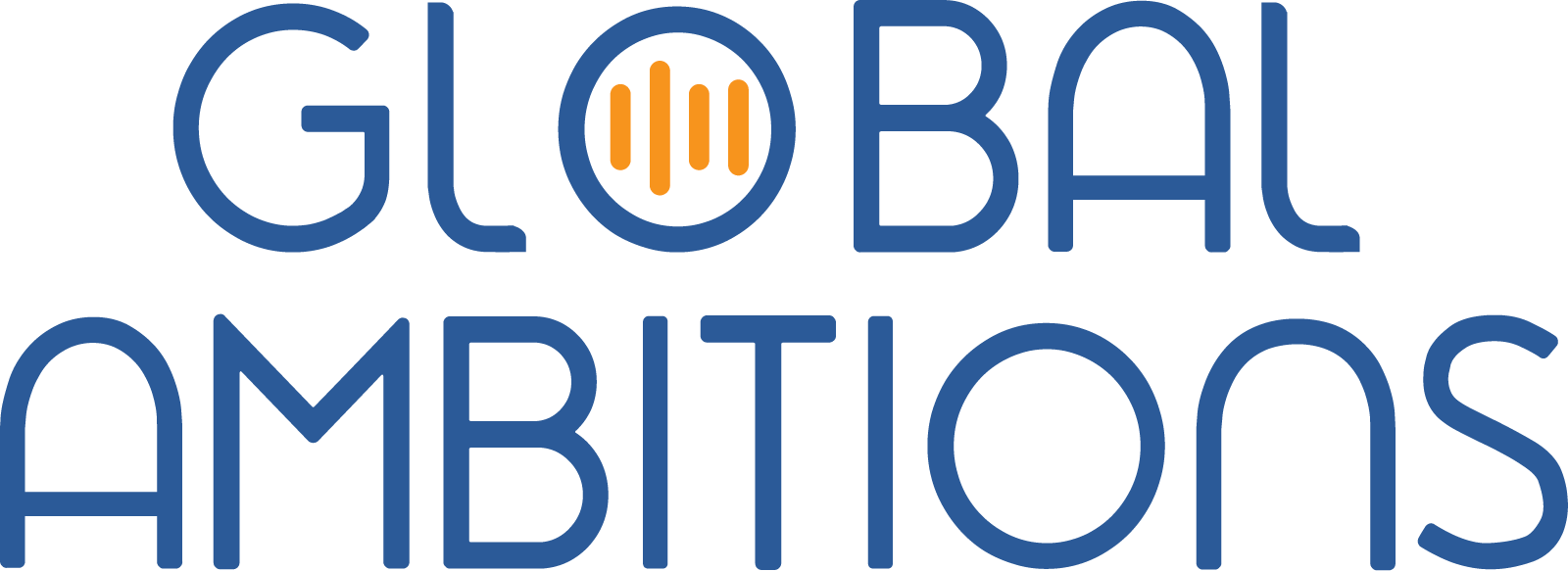with Ilona Pedersen, Localization Manager at Monta
Below is an automated transcript of this episode
Stephanie Harris: 0:17
Hi, my name is Stephanie Harris and I’ll be your host today for this episode of Global Ambitions. Our guest today is Ilona Pedersen and she is the Localization Manager at Monta. Ilona, welcome to the program.
Ilona Pedersen: 0:41
So I’m, as you mentioned yourself, I’m the Localization Manager at Monta and I’m running a very lean team of localization operations here. I think it makes sense for me just to tell a little story of how it all started. So I was very fortunate when I joined Monta. I came from a video and audio localization industry. For me that was something both new and old, and I was very fortunate with two reasons in particular. So when I joined Monta, the company was taking first localization steps, so to speak. So from a localizer point of view, it was a huge advantage for me to be invited to join from the very start and that there was already stakeholder buy-in.
And the second thing was that the product had already a global vision from the get-go. So the groundwork was set. The expansion folks were in place already and gearing up for market rollouts. So I stepped in this rather untouched space or land of localization at Monta. How coming was my background within as I said, media and audio localization, so within Netflix, within Disney Plus, and now transforming all my knowledge into software, which was a very huge learning career from the very start. Yeah, so I joined Monta as one team, one woman army. We’re still rather a lean team, so we do have a marketing asset coordinator and I’m then in and I’m planning in product engineering, so I’m taking care of the product localization and also more on a strategic level. So how do we scale our operations. How do we support our global growth strategy from the business perspective.
Stephanie Harris: 2:22
Okay, wow, Coming in as a one-woman team, that’s a big step for sure. I’ve heard that recently you started out with more of a direct-to-freelance type of model and now you’ve switched to more of an LSP working with larger partners, that sort of model. So can you tell us a little bit about what led you to make that decision? Was that all part of your growth strategy or how did that come about?
Ilona Pedersen: 2:46
Yeah, very good question. Well, to give a short answer, yes and no. I needed to start somewhere to get ahead and when I joined, as I said, our localization was at the very start. So at that point that was the most viable model to start working, with direct freelancers set up. It worked really well, until I realized that the setup is not going to be scalable in long run. And again, you know, once you start somewhere which would also be my best advice you know, just start somewhere, get out there. You know, like start building something up and you start building you know, layer on layer, and then you also have a bigger like overview of the business horizon.
And this is where I start, you know, kind of getting my head out of from the sand and I could see a little bit longer and longer perspective. And since, since I had an internal stakeholder buy-in and the product was with a global vision from the very start, so that was a rather easy shift in terms of decision making to flip over to the LSP side and the reason why we chose LSP it’s a long story but just to put it in short is so we looked at our current localization team and operations in-house and compared to so what are our needs going forward. And our localization maturity level was still, you know, rather in the beginning, at the scale-up, and we were not there to start up, you know, building a whole 360 localization team in-house. So that was a rather easy choice to go with LSP. But then, of course, once you open that door then you realize it’s a huge market with a lot of players. So that was my plan B. But again, you know I wouldn’t reach the plan B if I didn’t have plan A. So always be ready for plan B and don’t polish your first version of your plan with all the nitty gritty details, because things will change and you need to kill your darlings. And it’s much more easy to kill it, you know, or shape it, you know, when there are also some flaws.
Stephanie Harris: 4:52
So as you were going, it sounds like there’s a lot of adjustments as you’re going down the road. Was there anything that just really surprised you in the process? That was like a roadblock or something that came up, or even a nice surprise that came up that you were like wow, I was not expecting that, but here’s how we handled it.
Ilona Pedersen: 5:10
The big surprise was of course that it’s such a competitive industry the language services. So of course it was overwhelming. But again, you know there was overwhelming but it was also a very good learning curve to understand so what is the like, the average offer and what are the extra layers language service providers are offering. And for me it was quite clear that you know LSB that is also working with, especially with software clients, within the gross, how to like in a scale up and in gross environment is something very particular, you know, and really boils down to the type of content, terminology and the language and of course at the end also the speed, so kind of you know grouping all these service providers within the market categories and also looking at the service levels.
So for me from the very beginning it was very clear that I’m not looking for a provider. There was very clear vision of looking for a partner and you know as soon as you say we’re partner, that’s a two way street right so it’s a relationship and partnership. That was maybe a bit of surprise for me that it’s always going to be external relationship, meaning that alignments, especially in the beginning and also on an ongoing basis, that’s the essential in this relationship. So I sort of knew that you know that was going to take time for us to meet each other and align, but it actually was a bigger chunk of cake to put in that way to really align. So one thing is like to invite them to our space and align, but another thing is actually also giving space for the LSPs and for the linguistical teams. Really, you know, come back with the feedback, what is working and what is not working.
So that was a bit of a surprise for me, especially, you know, coming from a director freelancer setup where the communication chain it was much shorter. There was basically one stakeholder you would have communication with, whereas with an LSP you have a bigger organization you’re communicating with. So one thing is like realizing okay, this is external relationship, no matter how you twist it, so some investment will be needed here. But then also, once you have a relationship, then sort of establishing common language, do we speak about the same concepts in the same way, do we have the same understanding? And from there, so when we have a common understanding, common language let’s not talk about the values. Is our value chain? What are our business perspectives? I would say there was both a bit of a surprise and also, of course, a good learning.
Stephanie Harris: 7:49
So it sounds like that was a bit of a challenge to get up and running is making sure you have that alignment, making sure that you have the same terminology. You’re all on the same page. Do you have any, I guess, actionable tips for folks who are kind of in that same stage on this is a good way to do it, as, just as far as like communications, like cadences, that sort of thing?
Ilona Pedersen: 8:11
Well, we can also, you know, even take one step back. So when you do already the shift from the previous setup to the new setup, we’re going from plan A to B. What is really helpful and I wish I’ve done it even more to a bigger extent is really lining out all the strengths and weaknesses from the previous setup, because these are essentially the ones that are going to drive your scaling, and really look at them from a constructive angle and see okay, these things were working so in our case, you know the instant relationship and building engagement between product brand and linguists, that worked insanely well. So, of course, that was that part we wanted to keep in the future. However, what didn’t work was the scalability. It would take time for me to find replacements, to find a new linguist, to quality check, also on an ongoing basis.
So we basically we didn’t have that supply and quality setup in-house, and so for me it was really clear, like when I mapped out those things, what was pluses, what was minuses, that kind of lay, the foundation of how we want to go, move forward. So that would be the first thing. Now always look back, keep the good stuff and see how you can improve the flaws or weaknesses and maybe more on the tangible levels so also have a realistic onboarding plan, meaning don’t overwhelm relationships, because even though LSPs they are super agile, just as linguists they’re used to work with different clients, with different systems and platforms. It still is a new relationship and I feel like it’s mainly the client who is in a driver’s seat, sort of deciding on agenda and the speed. So put a realistic onboarding plan and really focus on the low-hanging big-impact actions points and gradually build on that base.
Stephanie Harris: 10:08
So, with your team, now you have a pretty good LSP partnership in place and you started to scale, it sounds like. So what’s next on the plan? What’s next steps for you?
Ilona Pedersen: 10:21
It really feels nice having established this new setup, but it never ends, right. I mean, you always look for improvements and just keeping up the things. So one of the biggest things right now is how do we eliminate manual, repetitive tasks. So once you invite external partner, you really need to document and think through how things are working, what are the processes, who owns what and that can be very, very overwhelming, because you don’t want to invite stakeholders to chaos, right, and again, you don’t have time to find, polish and really make this perfect flow. So you just create something in the beginning, so you have a base. And so for us, going forward is really how we basically think automations and reduce manual work as much as possible so we actually can focus on things where human power is needed. And, of course, the other big topic is AI. So how do we implement it as a service level? How do we control quality and how do we scale using AI because I mean it is here to stay right.
Stephanie Harris: 11:27
That’s the huge one that we’ve been hearing from a lot of different people. Of course, right now everyone’s talking about AI, so I think it’s going to be the next six months are going to be really interesting on seeing what sticks, what doesn’t, what ends up getting implemented, etc.
Ilona Pedersen: 11:43
Exactly, yeah, and because you know there’s so much talks about it, also so important, like having partner that is sort of you know, within the space and maybe even working with different clients on the same subject from different angles, because that can be a little bit disruptive. You know that there’s so much focus on AI that no one and it’s you know it came out like this hot air. But we really need to sort of, you know, have it landed somewhere and really see, like how we can leverage from it, like how can we implement it as a part of existing localization operations.
Stephanie Harris: 12:20
One of those real-life use cases, right?
Ilona Pedersen: 12:23
Exactly, exactly.
Stephanie Harris: 12:25
Well, is there anything else from this whole journey of moving from one model to the next that you want to share?
Ilona Pedersen: 12:31
Another, at least for our journey, and as you know, I mean there’s no one-size-fit-all journey, right? So, especially going from direct freelancer setup and going to LSP, where you all of a sudden have extra layers of communication, is, of course, how do you still keep linguists engaged. Because in our value chain, linguists these are key elements. We are operating within the charging of electrical vehicles, so that’s an e-mobility industry which is rather new and that one has an EV and it’s not only the charging process itself plug-in car but it’s actually redefining the whole charging experience. Just to mention example is so how you can charge your car with your own solar energy. So it’s completely now changing our behavior of charging a car. So that’s a completely new space, also in terms of language, also in terms of terminology. So for us it’s very important you know that the linguists we have, the linguistical teams we have, we take care of them, we keep engaging them, we provide them who’s all the context and even a little bit more they need for them to be able to take the right decisions.
So that’s another thing you know, when we look at the LSP space, you know quite often you have this discussion of a linguist, you know, being rather back-end or somewhere, team teams, very remote, this really undefined, almost like mystical size, whereas for us, you know, that was very important, you know, to really create this space where we can, you know, have a dialogue and really there are no stupid questions like, please ask us, ask us anything you know that we can support with. And basically, like, this is the big question still I’m looking at answers for that one, how do you do this emotional bond with the product? You know, how do you ensure that the brand voice and personas, you know, how do you ensure that being translated and for me at least, it’s evident that if you have the same team of linguists, there’s a legacy. They have been also on the journey with us, they’ve seen how things have evolved, how product has developed, which gives them really the right spot, you know, at least, to deliver the best translations and localizations.
Stephanie Harris: 14:53
That historical context means so much, I think.
Ilona Pedersen: 14:57
Yeah, definitely, definitely.
Stephanie Harris: 14:59
Well, we’re coming up to the end of our time. So thanks so much for joining us here today and I think this has been a very interesting episode and it’s great to hear this whole transition, and I think that there’s a lot of folks out there who are going through the exact same thing, so this is amazing for them as well to hear how someone else did it and get some tips and what they might be surprised about and all of those things. So thank you so much for joining us.
Ilona Pedersen: 15:23
And thank you so much for having me. It’s been a real pleasure.





